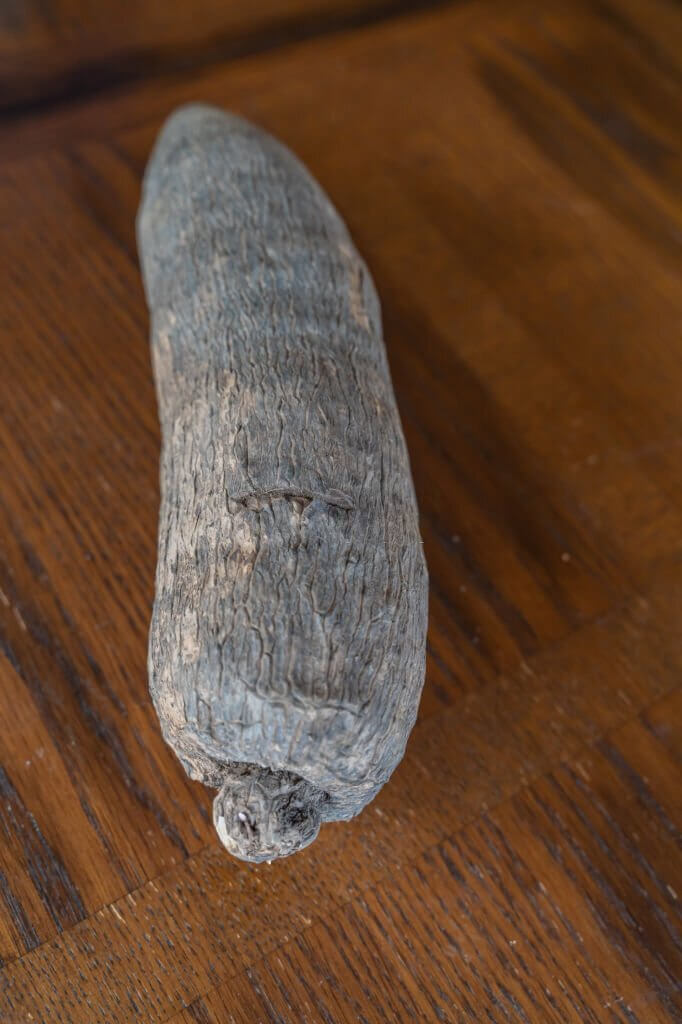Cutting into my yam to see brown patches all over is one of the most heartbreaking cooking realities I have experienced. But never again because I now know how to preserve yam, so it doesn’t go bad.
Have you ever planned to use a tuber of yam more than once but discovered that it has started growing molds on the exposed, cut surface on your next use? Or has it ever happened that you peeled more slices of yam than you needed? Or did you get a lot of tubers and need a way to preserve them so they don’t go bad over time?
With the present economic situation, just cutting off the contaminated surface might seem like the best option, but it’s not as healthy as you might want to believe.
Proper storage is all you need to prevent yam from going bad. We will show you 10 ways to preserve yam so it doesn’t go bad.
10 Ideas to Preserve Yam So It Doesn’t Go Bad
There is this belief that cutting your yam tuber from one end, either the head or tail, helps preserve it, but I never seem to remember which end. Well, you can save this list of 10 ideas on how to preserve yam so it doesn’t go bad.
Store It the Traditional Way
When we say ‘store it traditionally,” we refer to whole yams, not half-cut ones. This involves storing them under conditions where environmental factors can least play on them.
A cool, dark, dry space with little air will work fine. Also, try to place them on wooden planks or woven baskets instead of directly on the ground.
Freeze Whole
Yam seems to hate air and heat, except you are cooking them. You can store your whole yam if you have enough space in your freezer. Wash off the dirt on its body, leave it to drain or dab with a dry cloth, then place it in the freezer.
The downside is the strength needed to cut and peel it when you need to use it.
Slice and Freeze
This is one of the best ways to preserve yam. All you need to do is peel, slice & dice, rinse, drain, pre-freeze, put in airtight nylons, and freeze.
You can take them out anytime you need to use them. Note that there is no need to thaw or defrost them before employing any cooking method.
You can store yams for months, especially if you get them in a season when they are extremely cheap in preparation for harsher times.

Make into Different Meals
One thing I try to do when I have yam or tubers at home is make a yummy “yammy” food timetable. This way, you can use it up within a month without worrying about getting spoilt.
Yam porridge and Yamarita take the cake on this. You can easily store them in your freezer and eat them anytime. However, it might be better to finish the latter in 2 to 3 days.
If you want to preserve excess boiled yams, store them in the freezer and use them up within 3 to 4 days. You can make it into another meal like beans and yam – it never gets old! See other yam meals below.
Make It into Yam Flour (Elubo)
I don’t mean grind it raw. Instead, make it into yam flour for the elite Yoruba staple, “Amala.” This is another foolproof way of preserving yam.
- Peel the skin from the yam and wash it in clean water.
- Cut into round slices and put in a dry container.
- Pour hot water into the container until it’s above the yam level.
- Cover the container and leave it for three days for fermentation. Fermentation reduces cooking time.
- After 3 days, remove the yam slices from the water and sun dry them till they are hard.
- Mill them into yam (Amala) flour. It must be powdery.
It can last for 6 to 12 months in this form.
Make It into Yam Flour (for pounded yam)
Pounded yam is another African staple for which you can preserve yam. Of course, you also have to make it into yam flour, but only one procedure makes it different from the former.
- Wash to get rid of dirt on the skin.
- Peel and slice. It’s best to slice them thinly.
- Parboil by putting the sliced yam in boiling water. Do not cook. Leave for about 3 minutes.
- Drain and sun-dry. Depending on the sun’s intensity, this might take hours or 2 to 3 days. They should look like dry chips by the time they are done.
- Mill or grind into a smooth powder form.
- Store in moisture-proof nylons.
Stored in an airtight container, it will last 6 months to 1 year.
Rub Open Surface with Lemon Juice
I intend to try this next. One person said rubbing the exposed, cut, raw yam surface with lemon juice not only stalls browning but also prevents mold growth.
Soak in Water
This is how to preserve yam, so it doesn’t go bad in the short term. You can peel and slice, then soak in water for AT MOST 24 hours. After that, there will be no browning, but anything longer, and fermentation starts.
You can use any cooking method, and it will maintain its fresh taste in that time.
Rub the Exposed Surface with Palm Oil
Air and other contaminants are the major culprits of yam spoilage. Anything hindering their reaction can help preserve yam, so it doesn’t go bad.
Someone recommended palm oil, and I think it could be effective. Its viscosity will minimize possible atmospheric reactions.
Turn the Yam Over in a Small Bowl of Water
The exposed surface should be in a water bowl of about 2 centimeters. This should preserve the surface for about two days.
How to Preserve Yam in Freezer
- Slice your yam into round pieces and peel off its brown skin. Put the slices in a bowl of water as you peel them to avoid discoloration.
- Discard the skin or use it as animal feed and rinse the cut slices (you can either leave it round or dice them).
- Spread them on a tray with parchment paper and allow them to drain.
- Place in the freezer for 2 hours to pre-freeze. They should look dry, with no piece joined to another at the end of this step.
- Take them out of the freezer and put a considerable amount into as many Ziploc bags or other sealable nylons as possible.
- Seal and place in freezer.
How to Preserve Peeled Yam Overnight
Just soak it in water. It will be just fine the next day.
5 Things You Can Make with Yam So It Doesn’t Go to Waste
- Yam and beans porridge
- Yam pepper soup
- Yamarita (boiled yam wrapped in fry eggs)
- Yam porridge
- Yam balls




